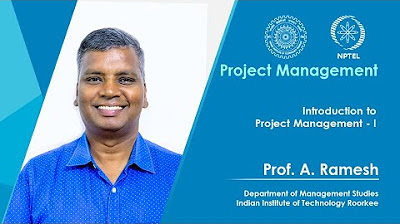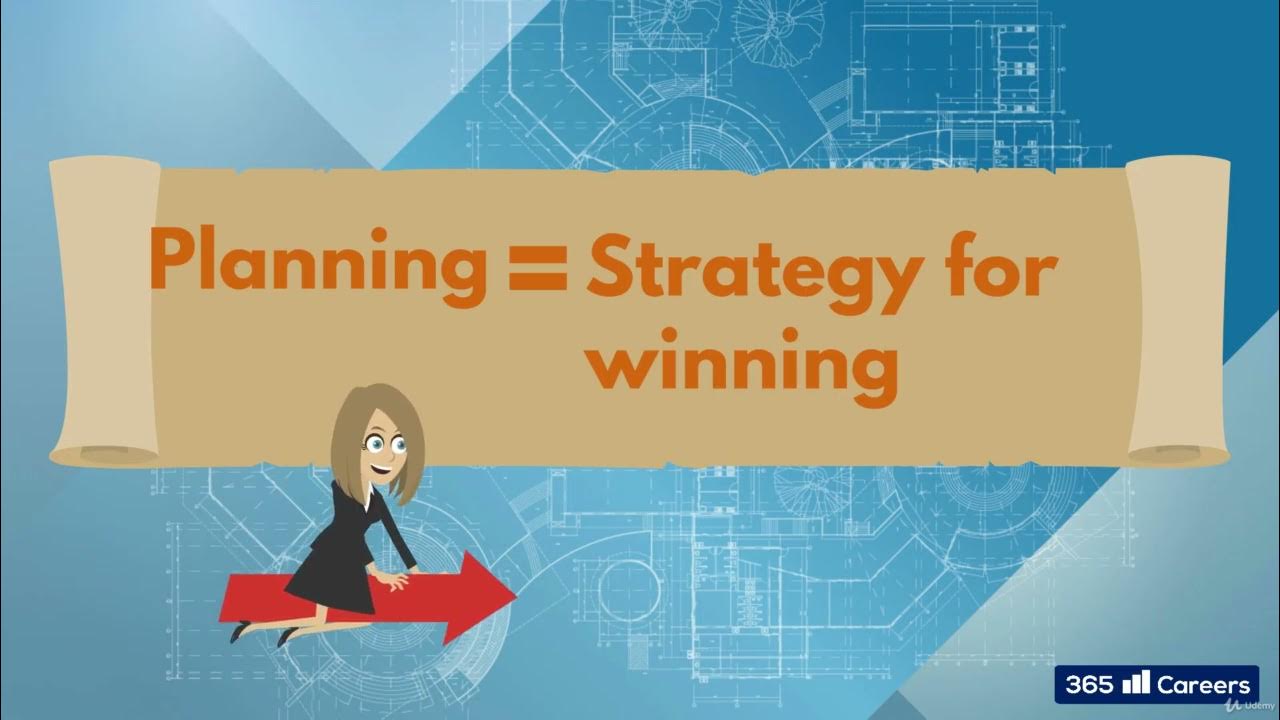Chapter 3: Managing the Information Systems Project
Summary
TLDRChapter 3 delves into project management, outlining the phases a project manager (PM) navigates from initiation to closing. A project is defined as a unique set of activities with a specific start and end, contrasting with routine maintenance tasks. The PM oversees the project's lifecycle, ensuring it remains focused and meets its goals. The phases include initiating the project, planning its scope and resources, executing the tasks, and finally closing the project with evaluations and documentation. The relationship between project management phases and the Software Development Life Cycle (SDLC) is also discussed, highlighting their complementary nature.
Takeaways
- 📋 A project is a planned set of activities with a defined beginning and end, distinct from maintenance tasks.
- 🔧 Maintenance activities aim to keep systems running, while projects are unique and one-time events.
- 🛠️ Project managers (PMs) oversee projects to ensure they stay focused and meet their end goals.
- 🚀 The four phases of project management are initiating, planning, executing, and closing.
- 📜 In the initiation phase, the project team is formed, the PM is selected, and rules are established in a Project Charter.
- 🗺️ The planning phase involves refining project goals into a scope statement and creating various planning documents for alignment.
- ⚙️ The execution phase is where actual work occurs, including coding, testing, and implementation, with PMs monitoring progress.
- 🔍 The closing phase wraps up the project by collecting feedback, archiving documentation, and resolving contract issues.
- 🔄 The phases of project management complement the Software Development Life Cycle (SDLC), showing the necessary steps to achieve project goals.
- 🔁 Other methodologies, like the spiral model, also exhibit similar phase relationships but differ in their approach to planning.
Q & A
What is the definition of a project according to the script?
-A project is defined as a planned set of activities with a defined beginning and end, distinguishing it from maintenance activities.
How do maintenance activities differ from projects?
-Maintenance activities are ongoing tasks, such as upgrading computers, aimed at keeping equipment running, whereas projects are one-of-a-kind activities with specific goals and timelines.
What are the four phases of project management outlined in the transcript?
-The four phases are initiating, planning, executing, and closing.
What happens during the initiating phase of a project?
-During the initiating phase, the project team is assembled, a project manager is chosen, and the rules of the project, including the chain of command and team responsibilities, are established.
What is the purpose of the Project Charter?
-The Project Charter codifies the project's rules, team responsibilities, and major constraints such as budget and schedule.
What key documents are developed during the planning phase?
-Key documents include a scope statement, a communication plan, a change management plan, and a resource procurement plan.
What is the primary focus of the executing phase?
-The executing phase is focused on implementing the project where actual work is done, such as coding, testing, and installation.
How does a project manager handle issues that arise during execution?
-A project manager addresses issues by following established plans for change management and procurement to ensure the project stays on schedule.
What occurs during the closing phase of a project?
-During the closing phase, interviews are conducted to assess successes and areas for improvement, documentation is archived, and any loose ends from contracts are resolved.
How do the phases of project management align with the Software Development Life Cycle (SDLC)?
-The phases of project management align with SDLC phases, where planning overlaps with the planning, analysis, and design phases of SDLC, and execution corresponds with the implementation phase.
What distinguishes the spiral model from traditional project management phases?
-In the spiral model, the planning phase is recurring rather than linear, with the project manager monitoring the entire spiral effect throughout the project lifecycle.
Outlines

This section is available to paid users only. Please upgrade to access this part.
Upgrade NowMindmap

This section is available to paid users only. Please upgrade to access this part.
Upgrade NowKeywords

This section is available to paid users only. Please upgrade to access this part.
Upgrade NowHighlights

This section is available to paid users only. Please upgrade to access this part.
Upgrade NowTranscripts

This section is available to paid users only. Please upgrade to access this part.
Upgrade NowBrowse More Related Video

Project Management Basics [QUICK GUIDE]

5 Tahapan Manajemen Proyek || 5 Siklus Hidup Proyek - Project Life Cycles Phases of The Project

Lecture 01: Introduction to Project Management - I

010 How does a project start and how does it evolve What a project's main stages

Waterfall Project Management Explained | All You Need To Know (in 5 mins!)

What is Project Management? | Introduction to Project Management - Zoho Projects
5.0 / 5 (0 votes)